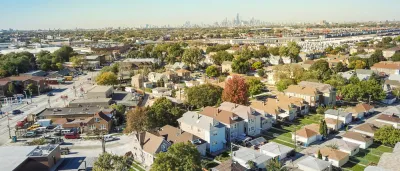An analysis of city-issued permits shows that homeowners in gentrified wards are building accessory dwelling units at much higher rates than those in less well-off communities.

In an evaluation of Chicago’s accessory dwelling unit (ADU) program, “The city’s Housing Department ran the data and found, at this early stage, the program is working in some ways but is challenged in others. It might just be adding expensive units in already expensive neighborhoods.”
As David Roeder reports for the Chicago Sun-Times, The program began as an experiment in “gently” expanding the housing supply to lower rents and create a revenue source for families. The city found that the program has not made an impact in neighborhoods with many vacant lots, nor are ADUs technically permitted to operate as short-term rental units to assuage concerns about transient occupancy.
According to the analysis, “83% of the approved units are slated to go in zones on the North or Northwest sides,” the more affluent parts of the city. This means that “In places plagued by crime and disinvestment, little is happening with ADUs.”
According to Housing Commissioner Marisa Novara, the discrepancy comes as no surprise. “By itself, the program can’t do much about longstanding inequity in real estate. Owners with greater disposable incomes are investing in the units while being in a high-rent area creates an incentive to build.” And while the city has made some grants available for ADU projects, Steven Vance of the Chicago Cityscape real estate information service says it could do more to support ADU construction for homeowners who can’t afford the upfront costs.
FULL STORY: City’s test of additional dwelling units finds most takers in gentrified wards

National Parks Layoffs Will Cause Communities to Lose Billions
Thousands of essential park workers were laid off this week, just before the busy spring break season.

Retro-silient?: America’s First “Eco-burb,” The Woodlands Turns 50
A master-planned community north of Houston offers lessons on green infrastructure and resilient design, but falls short of its founder’s lofty affordability and walkability goals.

Delivering for America Plan Will Downgrade Mail Service in at Least 49.5 Percent of Zip Codes
Republican and Democrat lawmakers criticize the plan for its disproportionate negative impact on rural communities.

Test News Post 1
This is a summary

Test News Headline 46
Test for the image on the front page.

Balancing Bombs and Butterflies: How the National Guard Protects a Rare Species
The National Guard at Fort Indiantown Gap uses GIS technology and land management strategies to balance military training with conservation efforts, ensuring the survival of the rare eastern regal fritillary butterfly.
Urban Design for Planners 1: Software Tools
This six-course series explores essential urban design concepts using open source software and equips planners with the tools they need to participate fully in the urban design process.
Planning for Universal Design
Learn the tools for implementing Universal Design in planning regulations.
EMC Planning Group, Inc.
Planetizen
Planetizen
Mpact (formerly Rail~Volution)
Great Falls Development Authority, Inc.
HUDs Office of Policy Development and Research
NYU Wagner Graduate School of Public Service





























